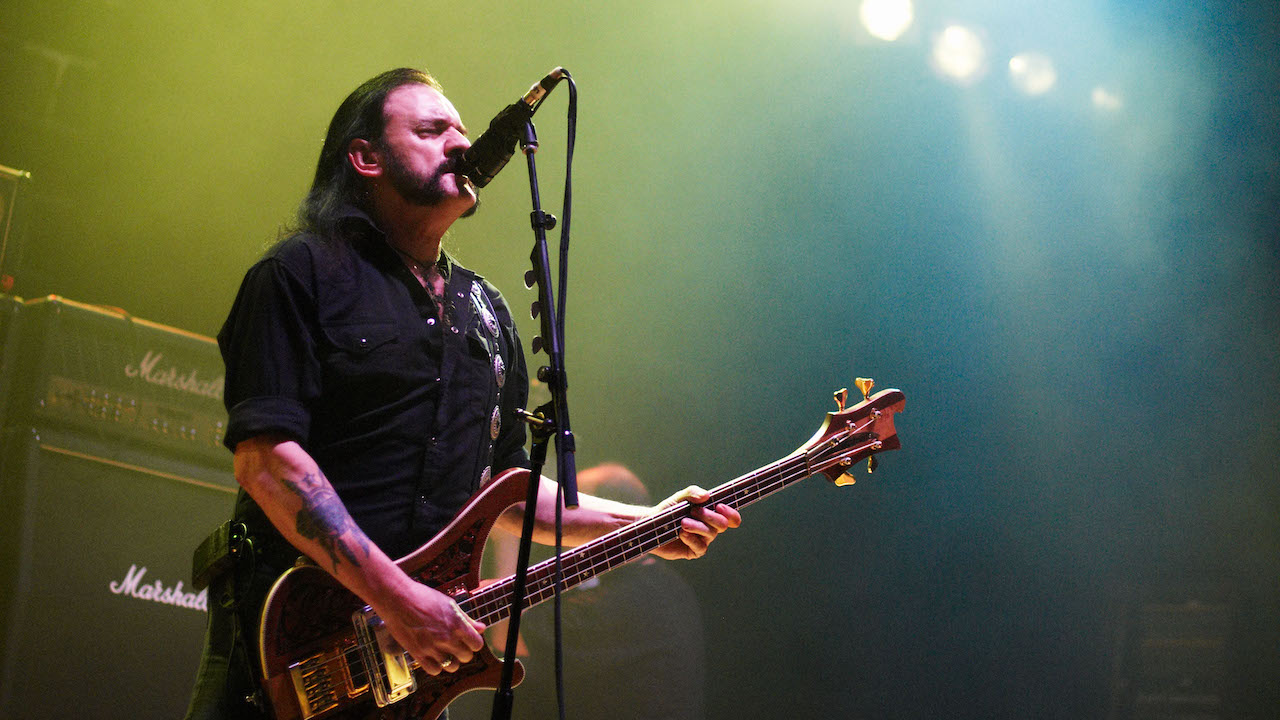"You can’t talk about distorted bass without mentioning Ace of Spades": Listen to Lemmy’s isolated bass on Motörhead’s born-to-lose anthem
"His tone was so huge!" The secrets behind Lemmy's distorted bass tone

The sight of Lemmy Kilmister pounding away at his Rickenbacker bass guitar, head back and growling into that impossibly high mic, with a wall of Marshall stacks behind him is one of the most iconic images in British metal.
As well as having one of the best intro riffs ever, Ace Of Spades is without doubt Motörhead’s most successful song. Talking to Mojo magazine in 2011, Lemmy said: “Ace of Spades is unbeatable, apparently. It’s not the best song we ever did by any means, but it’s the one everybody knows.”
Revisit Lemmy’s isolated bassline on Ace of Spades in the video below.
"When I was a youngster and Ace Of Spades came out, all of us in the Seattle punk rock scene instantly recognised the weight of Lemmy and Motörhead," said Guns N’ Roses bassist, Duff McKagan. "They embodied what all was good and great about rock’n’roll."
"I never really had the Motörhead bass tone with Guns; I had it more in Velvet Revolver because I’d record the bass guitar with a Marshall half-stack and a Gallien-Krueger and blend them in live," said Duff. "I like distortion generally, though, and Lemmy’s bass playing was just so insane and his tone so huge that you can’t talk about distorted bass without mentioning this track."
Lemmy was never precious about the secrets behind his distorted bass tone. “I don’t use any effects," he told BP. "On my amp, I turn the bass off, the treble off, the middle is full on, and I’m at about three o’clock with the presence and two o’clock on the volume – on both stacks. I have two ’70s Marshall stacks."
In this one-minute video, Lemmy demos the difference between how other bassists sound – and how he sounded. "The basic difference is, most bass players sound like this,” says Lemmy. “Whereas I sound quite different.”
Get The Pick Newsletter
All the latest guitar news, interviews, lessons, reviews, deals and more, direct to your inbox!
Ace of Spades was built around Phil Taylor’s ferocious double kick drum pattern. But then, as guitarist Eddie Clarke later said, Lemmy’s bass could also be difficult to play along with. “There was no bottom end! Especially in those days, a bottom end on the bass guitar was how it was played. Well, we didn’t have any. So that made life very, very tricky. Until we got the hang of it, which we finally did on Ace Of Spades, but only then because the producer, Vic Maile, insisted on it.”
Talking to BP, Lemmy, who died in December 2015, said that his bass playing “was based on guitar. I found out about drone strings, where you let the A or the D string ring and play the melody on the G. It falls in very well behind the guitar. I use a pick, too – it’s essential for this kind of music."
In 2021 Softube released a plugin emulation of Lemmy’s signature Marshall stack, which was designed in collaboration with Cameron Webb – Motörhead’s Grammy-winning producer. "To get his tone, we wanted to make sure we were using his basses and his amplifiers to dial this stuff in," said Webb. "Lemmy loved the way the open A string sounded whenever he played, and part of that was the way it went into the Marshall. It had the perfect tone."
To find out more about the Softube plugin, visit softube. The 2010 Lemmy documentary is available on Amazon.

Nick Wells was the Editor of Bass Guitar magazine from 2009 to 2011, before making strides into the world of Artist Relations with Sheldon Dingwall and Dingwall Guitars. He's also the producer of bass-centric documentaries, Walking the Changes and Beneath the Bassline, as well as Production Manager and Artist Liaison for ScottsBassLessons. In his free time, you'll find him jumping around his bedroom to Kool & The Gang while hammering the life out of his P-Bass.
“I asked him to get me four bass strings because I only had a $29 guitar from Sears”: Bootsy Collins is one of the all-time bass greats, but he started out on guitar. Here’s the sole reason why he switched
“I got that bass for $50 off this coke dealer. I don’t know what Jaco did to it, but he totally messed up the insides!” How Cro-Mags’ Harley Flanagan went from buying a Jaco Pastorius bass on the street to fronting one of hardcore’s most influential bands













